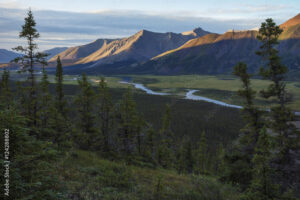Once again, this was a great debate question. Both sides argued their points very well; I found myself agreeing with Amanda, Jacquie, AND Ramsel all at the same time. Kudos to Ramsel for taking on this debate by herself. All three debaters did an awesome job.
I AGREE
I voted for the “agree” side in the pre-vote. The topic closely aligned with the arguments made by JR and myself in our debate. At the risk of sounding redundant, technology is not inherently good or bad. It is a tool that can be used for good or for bad. Teachers in the Yukon have a responsibility to use technology and social media to promote social justice because it is in the curriculum.

Teachers need to use their position of power and influence to promote social justice. The article “Teaching Social Justice in Theory and Practice” outlines ways this can be done. It also highlights reasons it MUST be done. As I read the article. I was reminded of a book I read in another course. Has anyone taken EDL 829 Supporting Indigenous Success? If so, remember this book?

The article mirrors much of what is represented in the “Model of effective teaching for Indigenous students.” Information from the headings “Fostering a classroom community of conscience” and “Helping students see each other as co-learners rather than adversaries” greatly overlaps with the model of effective teaching. (see below)

This is not an add-on to the curriculum, it IS the curriculum. I have found that being open to the possibility of engaging students in social justice issues allows the teacher to see opportunities when they arise.
AN EXAMPLE
This story goes back a few years. There is a protected area in the Yukon called the Peel Watershed.
Stunningly beautiful and one of the last areas that have not been open mining development. It is also traditional territory for four Yukon First Nations. The Yukon Party, the government in power then, held a referendum to determine if some of the Peel should be open to mining. People voted and said no. The government said they would do it anyway, and things got heated politically. The decision affected my junior high students as many were Frist Nations and part of the Peel was in their settlement lands. I was upset because the government was not listening to the people; VERY undemocratic and not okay. I created a project to help the students advocate for the Peel. This was not planned or in my year plans. Stakeholders and politicians visited the class and answered questions. The local biologist came to the classroom with a pile of maps; each highlighted an area of the Peel that was important for a specific species of plant or animal. The students did their research and wrote letters to politicians from every level of government. The letters outlined their opinion of what should be done with the Peel Watershed, backed up with facts from their research. After completing the project, I checked off learning objectives from the English, Social Studies, and Health curriculum.
I DISAGREE
I had to side with Ramel’s argument as she focused on the word “neutrality.” This is a very important point and can not be discounted. Remaining neutral is part of the responsibility of the teacher. To repeat a previous point, teachers are in a position of power. What we say and do influence our students. I discussed the civics unit made by Elections Canada in class. My students wanted me to tell them how I voted in the federal election, but I waited until AFTER they voted in our mock election. I did not want to influence their vote with my way of thinking. It is important that we teach our students HOW to think, not WHAT to think. I agree with Jessica when she pointed out in the class discussion that she wants to teach her students to be good human beings.
The article “Social Media Use and Pathways to Protest
Participation: Evidence From the 2019
Chilean Social Outburst “shared by the agree side helps me make my point. The authors stated that “As a large number of studies demonstrate, social media use is closely linked to political participation, especially “unconventional” forms of participation such as protests.” (Scherman & Rivera, 2021, p.1). This was also seen in Canada during the Trucker Convey protests in Ottawa in February 2022. Many people who participated in the protests received their information from social media and primarily through Facebook posts. The Freedom Convey protests also had no defined leaders, a point made in the article by Scherman & Rivera. But I digress. My point is that social media is used by our students and is a vehicle to promote protest participation. Teachers have a responsibility to engage their students in discussions of social justice.
CONCLUSION
There is one debate left and I am looking forward to it. I honestly have no idea how I will vote in the next debate….. I will be sorry to see the debates and this class end.


Hi Laura! I also took EDL 829 and read the Goulets book there. Coincidentally we also read it as part of a staff pd project. It aligns well with the principles of the Following Their Voices initiaive that Balfour is a part of. I appreciated the way the Goulets consistantly brought the learning back to the student, and emphasized that the relationship with the student was essential in allowing for the learning itself to take place. When I consider the ways we engage with kids, esepecially as it relates to social justice issues, that model of effective teaching becomes so important. That being said, I do think this can happen in a classroom without a teacher’s presence on social media. These issues must be discussed, but I think there are a number of ways this can happen, and a number of pedagogical vehicles teachers can use to direct these conversations.
Awesome post this week Laura! Thank you so much for sharing so many of your own teaching moments with us relating to this week’s topic – it was very insightful and I love seeing what other educators are doing in their classrooms to gain perspective and become inspired 😊. I loved how you stated that we need to focus on teaching our students how to think and I share your view when it comes to wanting our students to turn out to be good human beings. I think we want our students capable of thinking critically for themselves and knowing how to make the right decisions once they enter the world outside of the classroom. Well done!
Hi Laura. Thanks for sharing your perspective here. I appreciate you sharing what is included in the curriculum in Yukon and how it relates to the book Teaching Each Other. I loved reading the Goulet and Goulet book in EDL 829 and as Janeen mentioned we also read it for staff PD. I often think about the teachings from the book as I try to make my classroom a learning environment where students collaborate and learn from one another by hearing their different perspectives. I would have to agree with Janeen that this learning can be supported in the classroom and/or in an online setting. I think having a teacher present with students to guide them through these types of topics helps them to navigate challenging conversations.